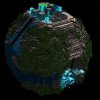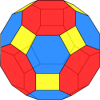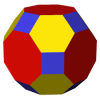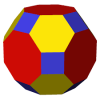So the next project i wanted to work on was a spherical artificial planet. But before i really get started, i wanted some advice, maybe some hurtles and solutions other players have had working on a similar project in the past.
The plan was to have a hollow center where additional parts could be docked. The planet itself would probably have to be at least 150m diameter, and around that i was going to dock a crystal armor sphere to act as a shield, which would rotate in two directions simultaneously, giving it some protection when the basic shields go down and preventing people crashing into the buildings on the surface.
My biggest worry is that radial gravity fields from the reactor chamber still wont work very well. Assuming i smoothed over the surface of the planet with slabs and wedges, how awkward would it be to walk around on the surface? Are there any outstanding bugs i need to worry about, like transitions between gravity fields causing players to get stuck or anything? Additionally, how is gravity on docked entities working with it now? Used to be pretty iffy whether hoving over an entity that was docked to a planet would apply gravity to you, and then it was equally confusing how far from the docked entity + planet youd have to get to escape again. So docking "elevator" ships to a planet to transport you into orbit was glitchy as shit and dangerous, because sometimes, but not all the time, a ship docked to the top of that elevator would be subject to gravity and fall to the ground and glitch out after undocking, or pilots flying over it would suddenly crash into the docked ship because it applied gravity to them. Is there a safe way to do it now, though?
Ive concluded that i would want the shield bubble to originate from the center of the sphere, which means id have to connect at least two equal size groups on opposite sides. But it also has to be big enough to encompass both the planet and the rotating crystal armor shield. The reactor and its chambers would have to share opposing sides (or could the reactor be a ring around the center like the bubble? It has to be big enough to provide a lot of power regardless) but wheres a good place to put the stabilizers? Ive considered in the shell of the planet, like forming a mantle layer along with shield capacitors, but that wont leave much room for the chambers. I also considered putting them in orbit a couple hundred meters outside the shield, requiring shields of their own, and then using those "satellites" to dock defense turrets and 4 usd docking arms for player ships. I figured with the stabilizers inside the mantle of the planet i could dock satellites anyway. But, that would expand the field of gravity directly, right, and then shit would crash into the planetary shield all the time, which is bad.
The defense turrets, then, would be on the satellites, and players can dock on then and from there teleport to the planet surface. I could make one orbital supercapitol turret, but it would have trouble with shooting anything that got between it and the planet, probably.
I wanted this to function as either a neutral derelict station or a faction's outpost station. But with gravity fucking shit up, how can it have anything outside the shield sphere? How would a player get inside, through a public access teleporter from their own ship? Satellites could have teleporters on them, but are satellites a good idea with the radial gravity field? Is it worth it to even attempt such a project?
The plan was to have a hollow center where additional parts could be docked. The planet itself would probably have to be at least 150m diameter, and around that i was going to dock a crystal armor sphere to act as a shield, which would rotate in two directions simultaneously, giving it some protection when the basic shields go down and preventing people crashing into the buildings on the surface.
My biggest worry is that radial gravity fields from the reactor chamber still wont work very well. Assuming i smoothed over the surface of the planet with slabs and wedges, how awkward would it be to walk around on the surface? Are there any outstanding bugs i need to worry about, like transitions between gravity fields causing players to get stuck or anything? Additionally, how is gravity on docked entities working with it now? Used to be pretty iffy whether hoving over an entity that was docked to a planet would apply gravity to you, and then it was equally confusing how far from the docked entity + planet youd have to get to escape again. So docking "elevator" ships to a planet to transport you into orbit was glitchy as shit and dangerous, because sometimes, but not all the time, a ship docked to the top of that elevator would be subject to gravity and fall to the ground and glitch out after undocking, or pilots flying over it would suddenly crash into the docked ship because it applied gravity to them. Is there a safe way to do it now, though?
Ive concluded that i would want the shield bubble to originate from the center of the sphere, which means id have to connect at least two equal size groups on opposite sides. But it also has to be big enough to encompass both the planet and the rotating crystal armor shield. The reactor and its chambers would have to share opposing sides (or could the reactor be a ring around the center like the bubble? It has to be big enough to provide a lot of power regardless) but wheres a good place to put the stabilizers? Ive considered in the shell of the planet, like forming a mantle layer along with shield capacitors, but that wont leave much room for the chambers. I also considered putting them in orbit a couple hundred meters outside the shield, requiring shields of their own, and then using those "satellites" to dock defense turrets and 4 usd docking arms for player ships. I figured with the stabilizers inside the mantle of the planet i could dock satellites anyway. But, that would expand the field of gravity directly, right, and then shit would crash into the planetary shield all the time, which is bad.
The defense turrets, then, would be on the satellites, and players can dock on then and from there teleport to the planet surface. I could make one orbital supercapitol turret, but it would have trouble with shooting anything that got between it and the planet, probably.
I wanted this to function as either a neutral derelict station or a faction's outpost station. But with gravity fucking shit up, how can it have anything outside the shield sphere? How would a player get inside, through a public access teleporter from their own ship? Satellites could have teleporters on them, but are satellites a good idea with the radial gravity field? Is it worth it to even attempt such a project?

















